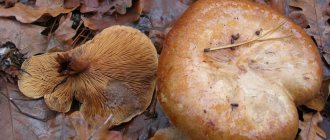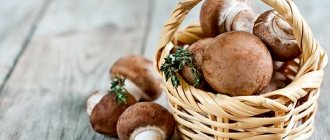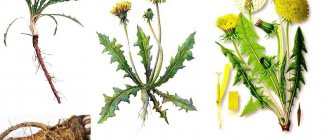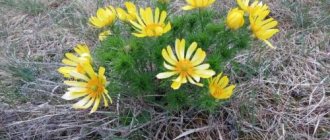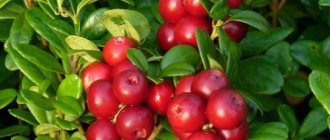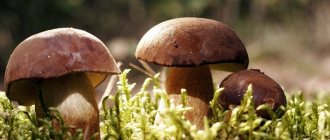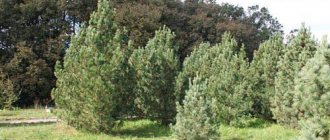Morels (Morchella) are a genus of mushrooms of the morel family, which belong to the class of marsupial fungi or ascomycetes. It is important to distinguish a mushroom with a porous body from stitches, which are poisonous. About the features of appearance, how to distinguish morels from other mushrooms, about the benefits and harms, as well as methods of use and cultivation - later in the article.
Varieties of mushroom: description and when to collect
The two most common types in nature are:
- true morel (Morchella esculenta);
- conical morel (Morchella conica).
Real morel
It is easily recognized by its wrinkled cap, which in appearance resembles shrunken dried fruit or crumpled parchment paper. It is covered with diverse cells and delimited by deep partitions resembling honeycombs. Various small living creatures often find refuge in the cells - snails, ants and worms, and natural debris also gets stuck. Therefore, the cap must be thoroughly washed before use.
The shape of the cap of a real morel has the shape of an elongated egg, reaching a diameter of 3-8 cm. It is colored brown, ocher-brownish or gray-whitish. The inside of the cap is hollow. Its edges are tightly fused with the leg.
The leg has a cylindrical shape. It is smooth and slightly covered with “folds”, hollow inside. In young mushrooms it is white, but over time it acquires a yellowish tint. The height of the leg is from 3 to 10 cm, and the diameter is 3-5 cm. The pulp is white and fragile. Depending on the time when morels are collected, they have a different smell. If you pick them in April, the mushrooms are watery and smell like melt water; in May they become strong and acquire a pleasant mushroom aroma and taste.
The true morel grows in deciduous, mixed forests, on the edges, in mossy and sandy areas, and in cleared areas. Experienced mushroom pickers will definitely look at old burnt areas, look for them at the roots of fallen birches and hollow willows, on the southern slopes of steep ravines.
Conical morel
The mushroom differs from the real one in the shape of its cap. It has a conical shape with a diameter of 3-5 cm and a height of 3-6 cm. The olive-brown or red-brown cap has a mesh-mesh surface. Its edges also grow together with the stalk, which is covered with longitudinal grooves. The stem is waxy, hollow inside, the flesh is thin and brittle.
The conical morel is a medicinal plant that grows throughout the forest zone, including the tundra and mountains. He prefers to settle on sandy soil. Often found in clearings and among bushes. Like other representatives of morels, it bears fruit in the spring, from early April to mid-May.
Rarely seen morels
Rarer varieties include:
Morel (Morchella crassipes)
The largest representative of the morel family. The stem is hilly, can reach a height of 17 cm and a diameter of 8 cm. If you measure the height of the mushroom along with the cap, it is about 23 cm. The giant has a gray-yellow cap and a pale yellow stem.
The shape of the cap can be cylindrical or oval; in adult mushrooms, the edges of the cap can grow to the stem. Some experts believe that this is a type of common morel, only large in size.
It grows in forests that are “inhabited” with poplars, hornbeams and ash trees. The first fruits can be found in early spring, depending on the weather, in early April or May. They grow in groups, but you can also find a single specimen.
Steppe morel (Morchella steppicola)
Grows in dry steppes. It has a spherical cap of gray-brown color with a diameter of 2-15 cm and a miniature stalk, not exceeding 2 cm in height. There are also mushrooms of this species that have no stalk at all. But in weight it can reach 2 kg.
The pulp is light, even white, quite elastic. It is found in wormwood steppes, begins to bear fruit in April, and can be found even in June. It is recommended to cut such mushrooms with a knife to preserve the mycelium.
Semi-free morel (Morchella semilibera)
It has a conical cap, but it does not grow to the stem. The yellow-gray-brown cap has a cellular surface, diamond-shaped cells. The pulp of the fruit body is hollow, with an unpleasant aroma, yellowish or white. The mushroom can reach a height of 15 cm, but small specimens, 4-6 cm, are more common.
The mushroom grows in tall grass, nettles and in forests where birches, lindens, aspens and oaks grow. Active fruiting occurs in May. But this species is extremely rare.
Tall morel (Morchella elata)
The rarest type. The hat is elongated, colored olive-brown. With age it becomes darker. The cells are triangular and clearly defined. The height of the cap is 4–10 cm. The stalk of young mushrooms is white, and that of adults is yellowish. Externally, it is very similar to the conical morel, but darker in color and much larger, it can reach up to 30 cm.
It is usually found in the mountains, but sometimes grows in mixed forests. Fruits in April-May, sometimes found in June.
All of them belong to the conditionally edible mushrooms of the third category, that is, before consumption they must be thermally treated - boiled in several waters or scalded.
What is it for? The morel contains a toxic substance - gyromitrin, the concentration of which depends on the location of the mushrooms and weather conditions. This toxin dissolves quickly in hot water, making the mushrooms safe. When dried, it also collapses, so they are prepared for future use only this way. Dried morels are ready for consumption after 3 months.
The third category includes mushrooms that have low nutritional value and are inferior in taste to mushrooms of the first and second categories.
Morels - description and photo. What does a morel mushroom look like?
These are the first mushrooms to grow in the spring. Their large and fleshy fruiting bodies, 2-25 cm high, consist of:
- caps (up to 15 cm in height, up to 10 cm in diameter),
- legs (up to 10 cm long and up to 5 cm in diameter).
The morel cap is ovoid, spherical-bell-shaped, conical or ellipsoidal, with a network of longitudinal and transverse oblique convex ribs, cellular, spongy, often fused with the stem below. From the outside it resembles a honeycomb, and the cut shows that there are cells only on its outer side. Its color varies from dirty grayish-white to dark brown, depending on the type and age of the fruiting body.
1. Conical morel (lat. Morchella conica), photo by Jörg Hempel, CC BY-SA 2.0 de. 2. Tall morel (lat. Morchella elata), photo by: Jason Hollinger, CC BY 2.0. 3. Steppe morel (lat. Morchella steppicola), photo by: Andrew Butko, CC BY-SA 3.0. 4. Edible morel (lat. Morchella esculenta), photo by: Björn S..., CC BY-SA 2.0.
The morel leg is glossy, white or yellow-brown, cylindrical, slightly expanding upward or downward or very thick, sometimes furrowed or longitudinally folded, scaly or smooth, fragile.
The entire fruiting body of the pioneer is usually hollow inside and consists of colored, highly branched hyphae with a diameter of 5–10 µm. The hyphae are separated by evenly spaced partitions (septa), in the center of which there is a pore, through which the migration of nutrients and cell organelles occurs.
Photo credit: Dan Molter (shroomydan), CC BY-SA 3.0
The flesh of the mushroom is waxy-white, often brittle and thin, with a pleasant odor.
Photo credit: TOMMES-WIKI, CC BY-SA 3.0
Nutritional value of morels
The nutritional value of morels is only 20 kcal per 100 g.
Fresh mushroom (100 g) contains:
- 2.9 g protein;
- 2 g carbohydrate;
- 0.4 g fat.
The main share is water - 92 g; it also contains dietary fiber - 0.7 g. Of the minerals, it contains potassium, magnesium, calcium, phosphorus, sodium, iron and vitamins C, B1, B2, PP, D.
Morels are the first spring mushrooms that are harvested in April–May.
Properties of morel
This mushroom has a dark brown cap, reminiscent of an egg, on the surface of which there are small cells. The stem of the mushroom is light, the flesh is white, has an attractive smell and is pleasant to the taste.
Morels are divided into three types:
- ordinary;
- conical;
- cap.
These mushrooms grow not only in forests: they can also be found in parks and gardens. It is noteworthy that an abundance of morels can be found 3-4 years after a forest fire, precisely in places where there was a forest disaster before.
Sometimes mushroom pickers, due to their inexperience, can confuse a real morel and a false one. Such a mistake can have dire consequences, because false mushrooms are quite poisonous. However, it is quite easy to distinguish them. Simply cut the mushroom in half vertically. If the cap and stem are not attached to each other, and the stem itself is quite dense, then the mushroom is false. But if the cap and stem are a single whole, and there is nothing inside the stem (i.e. it is hollow), then the mushroom is real.
The calorie content of morels is low: only 22 kcal per 100 g.
Can morels be grown at home?
Morels are delicious mushrooms that are considered a delicacy in European countries. Therefore, attempts have been made more than once to grow mushrooms at home.
German mushroom pickers suggested simply sowing pieces of morels into the ground and covering them with ash. In the fall, the top area is covered with straw or leaves, and in the spring, mushrooms are already found. It was also noticed that morels grow well in those places where fallen, rotting apples remain. That's why the French make beds on which they scatter pieces of mushrooms. In autumn, the ground is watered with apple pomace. In the spring the harvest is harvested.
Morel mycelium can be purchased at a specialty store and planted in the garden. Morels are planted in the spring. To do this, select a “mushroom” place on it near deciduous trees. It should be darkened. In the selected area, 15 cm of the top layer is removed.
Prepare the soil mixture:
- 3 parts sawdust;
- 1 part leaves;
- 1 part wood ash;
- 6 parts garden soil.
All components are mixed and poured into the prepared hole and watered. The mycelium is laid on top of the soil and covered with removed soil. Water again and cover the bed with leaves. In the summer they look after it, do not let the soil dry out and fertilize it with wood ash. In autumn, they are covered with natural materials - straw, branches, leaves. In the spring, after the snow melts, the cover is removed. The first mushrooms will appear in 2 weeks. The mycelium bears fruit for 3-5 years.
Morels in folk medicine
Since nature works in such a way that the benefits and harms of mushrooms go hand in hand, morels are not only poisonous, they are also healing. It has been proven that morels can strengthen the muscles of the eye in the same way as blueberries do and even many times more effectively.
True, in order for morels to have their beneficial effect on the eyes, you need to eat a lot of them, which is hardly possible. Therefore, morels are currently used in folk medicine as a drug to stimulate the digestive system, and also as a general tonic. Use a decoction of morels.
Application and processing
Dried morels are used to make mushroom powder, which is a natural flavoring agent. It is added to various dishes. Dried mushrooms quickly absorb moisture, so they are stored in paper bags or cardboard boxes in a dry place, otherwise they will become moldy. They are not salted or pickled.
Morel processing:
- mushrooms are cleaned and washed thoroughly;
- soak in water for 1 hour;
- boil in water - 30 minutes;
- washed with hot water;
- The mushroom is ready for use or consumption.
Morels are the first spring mushrooms, which, despite their low nutritional value, are very tasty. They should not be used by people who have individual intolerance, children under 12 years of age, pregnant and lactating women, as well as people with severe cardiovascular diseases.
0
0
Copy link
How to cook morels correctly so as not to get poisoned?
If you decide to eat morels, then remember: morels are poisonous! Of course, this is not a toadstool, but morels that are not fully prepared can cause severe poisoning.
The reason for the danger of morels lies in helvelic acid, which is present in their fruiting bodies and can cause hemolysis (decomposition of red blood cells), as well as toxic damage to the liver and kidneys.
Why, given such a huge danger, are morels considered edible mushrooms? The fact is that the amount of helvelic acid in morels is small. In addition, this substance quickly disintegrates when heated. That is why morels, boiled for fifteen minutes (the broth cannot be consumed!) are edible and even medicinal mushrooms.
lines
However, when eating morels, there is another danger - the possibility of confusing them with stitches. Unlike morels, the lines are truly poisonous. In addition to the same helvelic acid, they contain gyrometrin, a poison whose effect is similar to that of the poison of the toadstool. Gyrometrin cannot be destroyed by cooking, even for a very long time, and therefore replacing morels with strings is deadly.
If, after all that is written above, you still want to eat morels, then you will have to find a recipe for making morels. One of the simplest and most popular is the following.
Morels baked in a pot
Ingredients: morels, eggs, low-fat cream, cheese.
Wash the morels well and boil them without cutting them. Cook for at least 15 minutes. It is advisable to cook for five minutes, then drain the water, and then repeat this procedure twice more. Rinse cooked morels with cold water.
Chop the mushrooms and put them in a clay pot. Beat eggs with cream. The amount of eggs and cream is determined by the number of mushrooms. Salt the mixture of eggs and cream to taste and pour this mixture over the mushrooms in the pot.
Place the pot in the oven for 25 minutes. Grate the cheese. After 25 minutes, remove the pot from the oven, cover the mushrooms with grated cheese and put the mushrooms in the oven for another five minutes.
